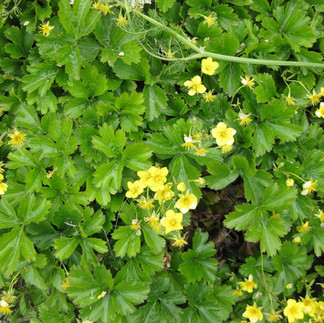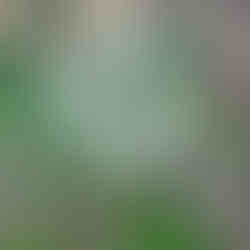Many think dry shade is an impossible place for a garden. On Long Island, we have several dry woodland settings. Some are thick with Oak, Pine, and Maple trees, while others are Beech, and Hickory (for what to plant under Hickory, Black Walnut and others in the Juglandaceae family, see https://www.kmsnativeplants.com/post/gardening-with-toxic-trees) trees. Usually the canopy is open enough for dappled sunlight, sometimes it is not. With the right native plants, you can create a lovely understory garden with many layers. It is very important to 'leave the leaves' in this garden setting. It will save moisture and keep the soil cool for these shade loving plants. Just make sure these leaves are not smothering the crowns of young, newly establishing plants.

The layers of a woodland garden: the Canopy is your large trees like Oaks, Pines and Maples. The Shrub & Understory layer is for small trees and tall shrubs like Dogwoods, Hop Tree and Sassafras. The Field & Herb layer is for perennials like Wood Asters and Wild Columbine. The Ground & Soil layer is for ground cover plants like Barren Strawberry and Wild Geranium and leaf litter.
Perennials:
Actaea racemosa - Black Cohosh
Ageratina altissima - White Snakeroot
Aquilegia canadensis - Wild Columbine
Aralia nudicaulis - Wild Sarsaparilla
Asclepias exaltata - Poke Milkweed (woodland edge)
Chimaphila maculata - Spotted Wintergreen
Chrysogonum virginianum var australe (ground cover)
Eurybia divaricata - White Wood Aster
Geranium maculatum - Wild Geranium (ground cover)
Geum fragarioides - Barren Strawberry (ground cover)
Helianthus divaricatus - Woodland Sunflower
Heuchera americana - Alumroot
Pachysandra procumbens - Allegheny Spurge (ground cover)
Podophyllum peltatum - May Apple
Scutellaria incana - Downy Skullcap
Solidago bicolor - White Goldenrod
Solidago caesia - Bluestem Goldenrod
Symphyotrichum cordifolium - Blue Wood Aster
Thalictrum thalictroides - Rue Anemone (ephemeral)
Trichostema dichotomum - Forked Bluecurls
Ferns:
Dennstaedtia punctilobula - Hayscented Fern (ground cover)
Polystichum acrostichoides - Christmas Fern
Trees:
Cornus florida - Common Dogwood
Juniperus virginiana - Eastern Red Cedar
Ptelea trifoliata - Hop Tree
Sassafras albidum - Sassafras
Shrubs:
Clethra alnifolia - Sweet Pepperbush (does not flower as well in full shade)
Cornus alterniflora - Pagoda Dogwood
Cornus racemosa - Gray Dogwood
Gaultheria procumbens - Wintergreen
Hamamelis virginiana - Witch Hazel
Symphoricarpos albus - Common Snowberry
Symphoricarpos orbiculatus - Coralberry
Vaccinium angustifolium - Lowbush Blueberry
Viburnum acerifolium - Mapleleaf Viburnum
Xanthorhiza simplicissima - Yellowroot
Sedges/Grasses/Rushes:
Carex albicans - White-tinged Sedge
Carex eburnea - Bristleleaf Sedge
Carex pensylvanica - Oak Sedge (ground cover)
Carex swanii - Swan's Sedge
Chasmanthium latifolium - River Oats
Deschampsia flexuosa - Wavy Hairgrass
Juncus tenuis - Path Rush
Luzula acuminata - Hairy Wood Rush (ground cover)
Vines:
Parthenocissus quinquefolia - Virginia Creeper (ground cover)
Pictures: First Row: Bluestem Goldenrod (NCSU), Barren Strawberry (NCSU), Virginia Creeper fall color (NCSU), Second Row: White Goldenrod (NCSU), Sassafras flower (KMS), Wintergreen (KMS), Third Row: Hop Tree flower (KMS), Wood Rush winter color (KMS), Witch Hazel flower (KMS), Bottom Row: Blue Wood Aster (KMS), Oak Sedge (KMS), Gray Dogwood berries (KMS)
*Remember even though you are planting for dry shade, the new transplants will need supplemental water while establishing their root systems. This can be 1-3 years depending on the plant.
References:

























Comentarios